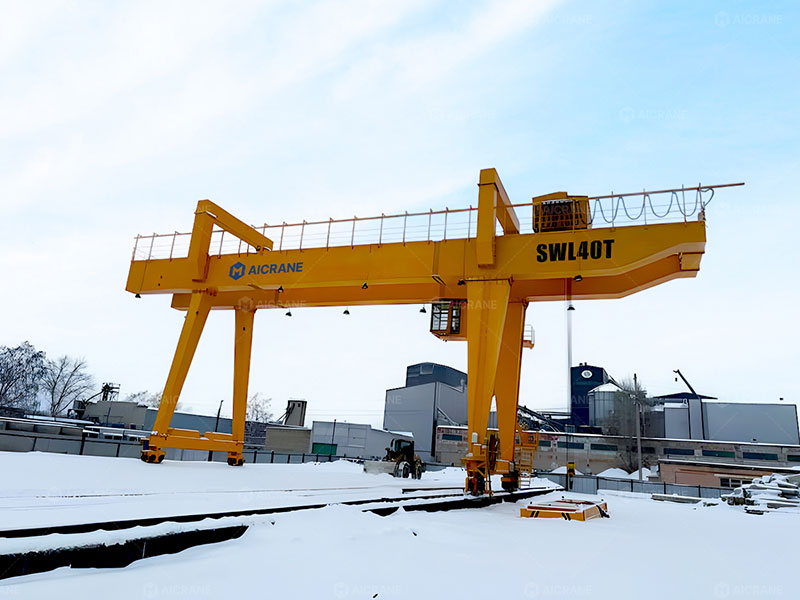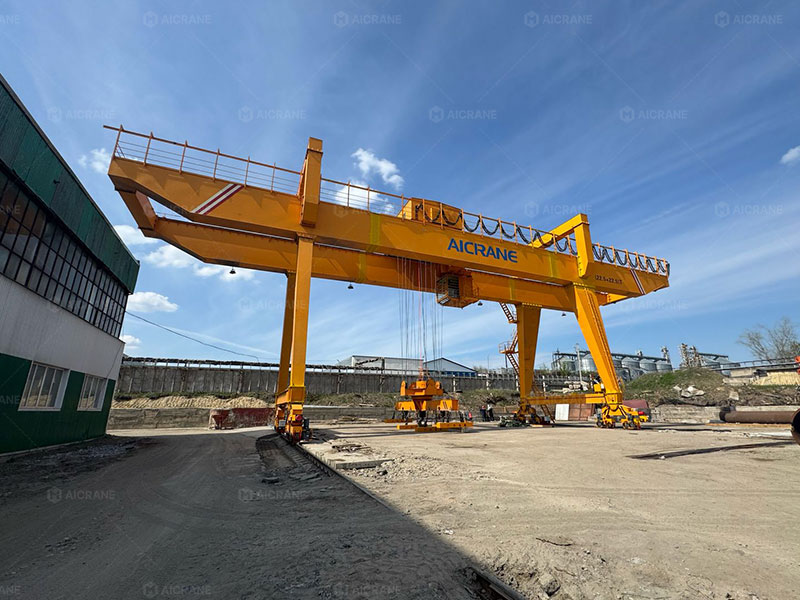Double girder gantry cranes are widely employed in heavy industrial applications, including construction sites, shipyards, manufacturing facilities, and logistics yards. These cranes are known for their superior lifting capabilities, wide span ranges, and structural stability. A critical factor that determines the overall lifting capacity of a double girder gantry crane is its hoisting mechanism. While other components such as the gantry structure, wheels, motors, and controls contribute to crane performance, the hoisting mechanism is the central element that directly manages the lifting and lowering of loads. This article explores the vital role that hoisting mechanisms play in the capacity determination of double girder gantry cranes.

Understanding the Hoisting Mechanism
A hoisting mechanism in a double girder gantry crane includes several key components:
-
Hoist motor (electric or hydraulic)
-
Wire rope or chain system
-
Drum or chain wheel
-
Brake system
-
Gearbox and transmission
-
Lifting hook or spreader beam
These components work together to perform vertical lifting operations. The hoist motor generates the mechanical energy required for lifting, which is transmitted through a gearbox and drum to wind or unwind the rope or chain, thereby raising or lowering the load.
Load Capacity and Hoisting Mechanism Interdependence
The lifting capacity of a double girder gantry crane is not arbitrarily determined—it is the result of carefully engineered calculations based on the strength, efficiency, and configuration of the hoisting mechanism. The capacity rating is usually expressed in tons (e.g., 10t, 20t, 50t, 100t), and it is crucial that the hoisting mechanism is capable of safely handling the rated load.
1. Hoist Motor Power and Torque
The power of the hoist motor (usually rated in kW) directly impacts the crane’s lifting ability. A more powerful motor can generate greater torque, enabling it to lift heavier loads with consistent speed and efficiency. The torque must be sufficient to overcome the gravitational force of the load and any additional friction in the hoisting system.
For instance, a double girder 50 ton gantry crane would typically require a motor with significantly more power than a 10-ton crane, not just to lift the load but also to ensure safe braking and holding capabilities.
2. Drum and Rope Configuration
The design of the drum and the winding configuration of the wire rope determine the mechanical advantage and stress distribution in the lifting system. A hoist with multiple reeving arrangements (e.g., 4/1, 6/2, 8/2) can lift more weight because it distributes the load over multiple lines, reducing the tension in each rope segment.
However, increasing the reeving ratio also affects lifting speed. More sheaves and rope lines mean slower lifting due to more friction and longer rope paths, which must be accounted for in capacity calculations.

3. Gear Ratio and Transmission Efficiency
The gearbox transmits motor torque to the drum or lifting element. Gear ratios are selected based on the desired lifting speed and torque requirements. A lower gear ratio provides more torque (better for heavy loads), whereas a higher gear ratio allows faster lifting (better for lighter loads).
The design must balance speed, power, and safety to determine a gantry crane true working capacity. Poorly matched gear systems can lead to overheating, increased wear, or insufficient torque – ultimately compromising lifting ability.
4. Brake System Load Holding
The braking system in the hoisting mechanism ensures the load can be held stationary at any height. It must be rated not only to stop the load during lifting and lowering but also to hold it securely during power failures. For capacity determination, the brake system is tested to handle at least 125% of the rated load as per international standards.
Safety Factors and Standards
Several safety standards define how hoisting mechanisms are to be rated and tested. For example:
-
FEM (European Federation of Materials Handling)
-
ISO 4301-1 (Classification of mechanisms)
-
CMAA (Crane Manufacturers Association of America)
-
ASME B30.2 and B30.17
These standards ensure the hoisting system has enough safety margin, typically requiring hoists to be tested at 125% or even 150% of their rated capacity. This ensures real-world reliability and accounts for dynamic forces and unexpected load shifts.
Hoisting Mechanism Selection and Its Influence on Crane Classification
The choice of hoisting mechanism also influences the duty classification of the crane. A crane designed for frequent, heavy lifting operations will use a more robust hoisting system than one used for light, occasional loads.
For example, a double girder gantry crane classified as A5 or A6 (moderate to heavy service) will require a hoisting mechanism built for more frequent cycles, faster speeds, and increased thermal capacity. Such hoisting systems are more expensive but essential for maintaining operational reliability and safety.
Practical Examples
Case 1: 50-Ton Double Girder Gantry Crane for Steel Handling
In a steel fabrication yard, a 50-ton double girder gantry crane is used to lift long steel plates. The hoisting system features:
-
75 kW hoist motor
-
8/2 reeving with high-strength wire rope
-
Automatic overload protection
-
Dual-disc brake system
This setup allows the crane to lift loads up to 50 tons safely and repeatedly throughout the day, with a work duty of A6.
Case 2: 15-Ton Crane for Railway Loading
In a railway loading station, a 15 ton gantry crane operates with a lighter-duty hoist mechanism:
-
22 kW motor
-
4/1 reeving
-
Electromagnetic brake
-
Frequency inverter for speed control
The hoisting mechanism is sized appropriately to the application, which involves 6-8 lifts per day, ensuring efficiency without overspecification.
Hoisting Mechanism Maintenance and Capacity Retention
A hoisting mechanism’s performance degrades over time due to wear on gears, ropes, brakes, and motors. To maintain rated capacity:
-
Regular inspections of rope wear, brake performance, and motor heat signatures are essential.
-
Lubrication schedules must be strictly followed.
-
Load testing should be conducted periodically to verify performance.
Neglecting hoist maintenance can lead to derating or even total failure, rendering the crane unsafe for operation.
Conclusion
The hoisting mechanism is the heart of any double girder gantry crane. Its motor, gearbox, braking system, and rope configuration collectively define how much weight the crane can safely and effectively lift. Engineers must consider all aspects of the hoisting system during crane design and capacity determination to ensure that the crane not only meets its rated performance but also operates safely over its lifecycle.
Choosing the right hoisting mechanism is not just a matter of lifting heavier loads – it’s about aligning the mechanical components with the intended usage, operational environment, and safety standards. Whether you’re specifying a new crane or upgrading an existing one, understanding the hoisting mechanism’s role is essential in achieving optimal performance, reliability, and compliance.